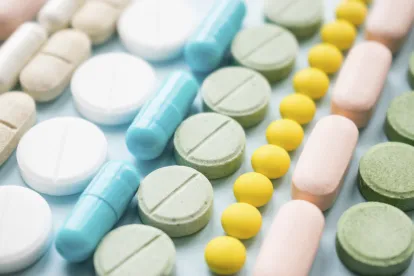A growing problem in the U.S. is the widespread availability of counterfeit medications, or fake prescription pills. These drugs, made to look like authentic prescription medications, may contain no active ingredient or any combination or dose of active ingredients, including toxic chemicals. The U.S. Drug Enforcement Administration (DEA) Laboratory recently reported that 60% of fentanyl-laced fake prescription pills analyzed in 2022 contain a potentially lethal dose of fentanyl. According to the Centers for Disease Control and Prevention (CDC), over 100,000 Americans died of drug poisoning in 2021 with 66% of those deaths attributable to synthetic opioids, like fentanyl.
Fake prescription pills are easy to obtain. A retrospective assessment of the U.S. Food and Drug Administration (FDA) Office of Criminal Investigation press release database for enforcement actions against drug counterfeiters found that 64.6% of law enforcement actions involved internet sales for counterfeit products or active ingredients used to manufacture counterfeit products. The assessment reported that “[t]he counterfeit medications were most frequently in the sexual dysfunction (erectile dysfunction or premature ejaculation), opioid, stimulant, anabolic steroid, and benzodiazepine drug classes.”
A retrospective assessment of the FDA Office of Criminal Investigation press release database for enforcement actions against drug counterfeiters found that 64.6% of law enforcement actions involved internet sales for counterfeit products or active ingredients used to manufacture counterfeit products.
Preventing the distribution, purchase and use of counterfeit medicine is a challenging task. The CDC states: “It’s hard to spot counterfeit drugs, the only real way to know if a drug is counterfeit is through chemical analysis done in a laboratory. Sometimes, counterfeit drugs differ in size, shape, or color, or are sold in poor-quality packaging, but they often appear identical to the real thing.” Both supply-side and demand-side tactics have been proposed to thwart the distribution and use of counterfeit drugs. Supply-side factors include laws and regulations to help deter the sale of counterfeit drugs and anti-counterfeiting technology to help consumers distinguish between counterfeit and authentic medications. Demand-side tactics involve public health campaigns directed toward consumers to emphasize the social desirability of not purchasing medications from potentially unsafe online pharmacies.
Packaging with specific identifiers is one example of an anti-counterfeiting effort that manufacturers can employ. However, packaging may also be counterfeited. Dr. William Grover, an associate professor in the Department of Engineering at the University of California, Riverside, proposed the application of nonpareils, tiny multicolor candy spheres normally used to decorate candies or desserts, to pills as “an edible universally unique physical identifier to each pill, tablet, capsule, caplet, etc.” The random pattern, or “CandyCode,” formed by the nonpareils on a pill could be used to distinguish it from other pills.
No matter what anti-counterfeiting methods are used, U.S. drug manufacturers are required to follow FDA regulations. Prior to approving a drug for marketing, FDA “reviews the drug name, labeling, packaging, and product design to identify and revise information that may contribute to medication errors.” FDA has established “regulations that list color additives for use in the United States and the conditions imposed on their use in food, drugs, cosmetics, and medical devices, respectively.” To help protect the safety, effectiveness and quality of the U.S. drug supply, FDA has “issued a draft guidance for industry on anti-counterfeiting for pharmaceutical manufacturers who want to use physical-chemical identifiers (PCIDs) in solid oral dosage forms (SODFs). A PCID is a substance or combination of substances possessing a unique physical or chemical property that unequivocally identifies and authenticates a drug product or dosage form.”
There is no single quick way to prevent the sale, dispensing and use of fake drugs. Pharmaceutical companies, however, can counter the problem by developing technology within FDA guidelines to help protect the safety and quality of the U.S. drug supply. We will continue to monitor FDA regulations and novel ways to curtail medication counterfeiting and publish an alert when warranted.




 />i
/>i

